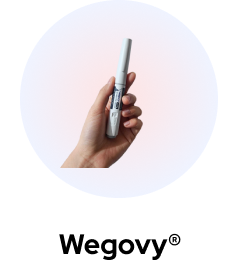Written by: Radhika Rangwani, Registered Psychotherapist
Reviewed by: Sarah Bento De Sousa, PharmD RpH
Picture this – it’s the end of a busy week filled with stress, frustrations and perhaps some great moments. You’re sitting on the couch, reaching for the clicker to start your latest TV show, about to tuck into a big bowl of your favourite treats. Consider – are you eating because you’re hungry, or are you looking to satisfy an emotional need?

As stress levels escalate, so does the tendency to seek comfort in food, often leading to stress eating.
Understanding the root causes of stress eating is the first step towards conquering this habit. In this comprehensive guide, we will unravel the reasons behind stress eating and provide effective strategies to manage it, empowering you to regain control over your relationship with food and emotions.
The Vicious Cycle of Stress Eating
Stress eating, also known as emotional eating, is a phenomenon where individuals turn to food in response to emotional triggers rather than physical hunger. It typically involves consuming larger quantities of unhealthy, high-calorie foods during times of stress, anxiety, sadness, or even happiness. This practice, although providing momentary relief, ultimately perpetuates a vicious cycle that can negatively impact physical and mental well-being.
The Causes of Stress Eating
1) Emotional Triggers: Stress eating often stems from emotional triggers such as work-related pressure, relationship problems, financial stress, or feelings of loneliness and boredom. Food becomes a coping mechanism to escape or numb these emotions temporarily [1].
2) Habitual Responses: Over time, individuals may develop a habit of turning to food as a way to deal with stress. This habitual response is reinforced as the brain associates eating with comfort or relief from stress [2]. Remember our example above – Friday nights with Netflix!
3) Dopamine Release: Certain foods, especially those high in sugar and unhealthy fats, can trigger the release of dopamine, a neurotransmitter associated with pleasure and reward [3]. This response creates a temporary sense of well-being, reinforcing the desire to eat in times of stress.
4) Cultural and Social Influences: Social situations, cultural practices, or gatherings often revolve around food. Stressful social events or societal pressure can lead to overeating or indulging in unhealthy food choices as a coping mechanism [4]. Thanksgiving dinner with extended family can often drive us to eat (and drink) much more than we normally do to deal with our emotions.
5) Lack of Coping Skills: Individuals may resort to stress eating due to a lack of effective coping skills to deal with emotions and stressors. Healthy coping mechanisms may not be readily available or practised, making food the default choice [5].
6) Limiting or lack of expression – such as suppressing emotions or being avoidant of them.
Effective Strategies to Manage Stress Eating
1) Mindful Awareness:
Practise mindful eating by paying close attention to the sensations, flavours, and textures of your food. This can help you differentiate between actual hunger and emotional cravings [6].
Keep a food journal to track when and why you eat. This self-awareness can reveal patterns of emotional eating and help you develop strategies to break them.
2) Stress Management Techniques:
Explore stress-relief techniques such as deep breathing, meditation, yoga, or progressive muscle relaxation [7]. Regular practice can help reduce stress levels, making you less inclined to turn to food for comfort.
Engage in activities you enjoy, like hobbies or exercise, to redirect your focus from stress to positive experiences. Physical activity can release endorphins, the body’s natural mood lifters [8].
3) Build Healthy Coping Strategies:
Learn and practise healthy coping mechanisms to deal with stress, such as journaling, talking to a friend or therapist, engaging in creative outlets, or participating in support groups [9].
Build a strong social support network, surrounding yourself with individuals who encourage and support healthy habits, steering you away from emotional eating [10].
4) Create a Structured Eating Routine:
Establish a consistent eating schedule with balanced meals and nutritious snacks throughout the day. This can help stabilise blood sugar levels and reduce the likelihood of impulsive eating [11].
Prioritize a balanced diet rich in whole grains, lean proteins, fruits, vegetables, and healthy fats. Proper nutrition can contribute to improved emotional well-being [12].
5) Seek Professional Help:
If stress eating persists and significantly affects your daily life and well-being, consider consulting a mental health professional. Cognitive-behavioural therapy (CBT) and other therapeutic approaches can be highly effective in addressing emotional eating patterns [13]. Remember when you’re a part of our Weight Loss Program you get 30 minutes a month to chat with our Wellness team.
Conclusion
Conquering stress eating is a journey that begins with understanding the root causes and developing effective strategies to manage emotional triggers. By cultivating mindfulness, practising stress-relief techniques, building healthy coping mechanisms, and seeking support when needed, you can break free from the clutches of stress eating and embrace a healthier, happier lifestyle. Remember, you have the power to reclaim control over your relationship with food and emotions for a fulfilling life.
References:
- Harvard Health Publishing. (2019). Why stress causes people to overeat. [https://www.health.harvard.edu/staying-healthy/why-stress-causes-people-to-overeat]
- Mayo Clinic. (2019). Stress eating: Avoid the urge to splurge. [https://www.mayoclinic.org/healthy-lifestyle/stress-management/in-depth/stress/art-20046037]
- Singh, M. (2014). Mood, food, and obesity. Frontiers in Psychology, 5, 925. [https://doi.org/10.3389/fpsyg.2014.00925]
- Zlatevska, N., Dubelaar, C., & Holden, S. S. (2014). Sizing up the effect of portion size on consumption: A meta-analytic review. Journal of Marketing, 78(3), 140-154.][https://doi.org/10.1509/jm.12.0583]
- Ganley, R. M. (1989). Emotion and eating in obesity: A review of the literature. International Journal of Eating Disorders, 8(3), 343-361. [https://doi.org/10.1002/1098-108x(198905)8:3<343::aid-eat2260080308>3.0.co;2-s]
- Dalen, J., Smith, B. W., Shelley, B. M., Sloan, A. L., Leahigh, L., & Begay, D. (2010). Pilot study: Mindful Eating and Living (MEAL): Weight, eating behaviour, and psychological outcomes associated with a mindfulness-based intervention for people with obesity. Complementary Therapies in Medicine, 18(6), 260-264. [https://doi.org/10.1016/j.ctim.2010.09.008]
- Keng, S. L., Smoski, M. J., & Robins, C. J. (2011). Effects of mindfulness on psychological health: A review of empirical studies. Clinical Psychology Review, 31(6), 1041-1056. [https://doi.org/10.1016/j.cpr.2011.04.006]
- Babyak, M., Blumenthal, J. A., Herman, S., Khatri, P., Doraiswamy, M., Moore, K., … & Krishnan, K. R. (2000). Exercise treatment for major depression: Maintenance of therapeutic benefit at 10 months. Psychosomatic Medicine, 62(5), 633-638. [https://doi.org/10.1097/00006842-200009000-00004]
- Schneider, K. L., Panza, E., Handschin, B., Ma, Y., Busch, A. M., Waring, M. E., … & Pagoto, S. L. (2016). Feasibility of pairing behavioural activation with exercise for women with type 2 diabetes and depression: The Get It study pilot randomized controlled trial. Behavior Therapy, 47(2), 198-212. [https://doi.org/10.1016/j.beth.2015.11.005]
- Puhl, R. M., & Brownell, K. D. (2003). Ways of coping with obesity stigma: Review and conceptual analysis. Eating Behaviors, 4(1), 53-78. [https://doi.org/10.1016/s1471-0153(02)00096-x]
- Ma, Y., Bertone, E. R., Stanek III, E. J., Reed, G. W., Hebert, J. R., Cohen, N. L., … & Ockene, I. S. (2003). Association between eating patterns and obesity in a free-living US adult population. American Journal of Epidemiology, 158(1), 85-92. [https://doi.org/10.1093/aje/kwg117]
- The Government of Canada. (2019). Canada’s food guide. [https://food-guide.canada.ca/en/]
- Katterman, S. N., Kleinman, B. M., Hood, M. M., Nackers, L. M., & Corsica, J. A. (2014). Mindfulness meditation as an intervention for binge eating, emotional eating, and weight loss: A systematic review. Eating Behaviors, 15(2), 197-204. [https://doi.org/10.1016/j.eatbeh.2014.01.005]











 (US)
(US)